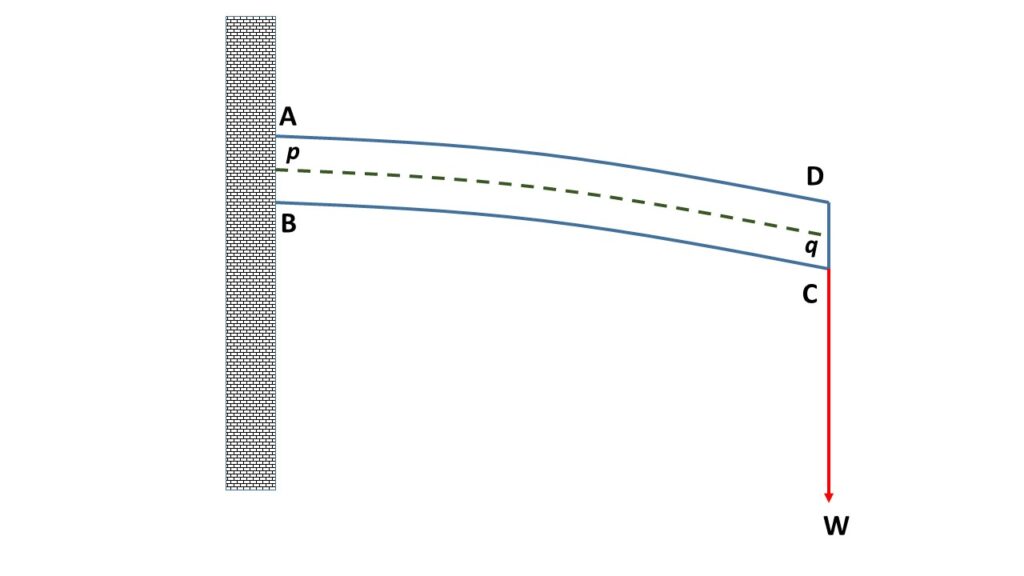Neutral Surface:
Let us consider a uniform metallic beam ABCD, which consists of a large number of filaments of small thickness lying one above the other, is fixed at one end AB and is loaded by the weight W at the other end CD, as shown in the figure below.
A deformation is produced by the load, this develops a restoring force within the beam due to the elasticity of the material of the beam. Now the restoring force tries to bring back the beam to its original position. In the equilibrium position, the restoring force is balanced by the bending couple. This two couples act in opposite directions.
Due to the bending of the beam, the inner filaments like BC are compressed or shortened, while the outer filaments like AB are elongated.
There is an intermediate section pq in between these two portions of filaments, which maintains its original length i.e., neither stretched nor compressed. This surface is called the neutral surface.

Plane of bending:
The plane in which bending takes place is known as the plane of bending. If the beam is placed horizontally, then the plane of bending is a vertical plane perpendicular to the beam.
Neutral Axis:
The section of the neutral surface pq by the plane of bending which is perpendicular to it is called the neutral axis. The change in length of any filament is proportional to the distance of that filament from the neutral axis.